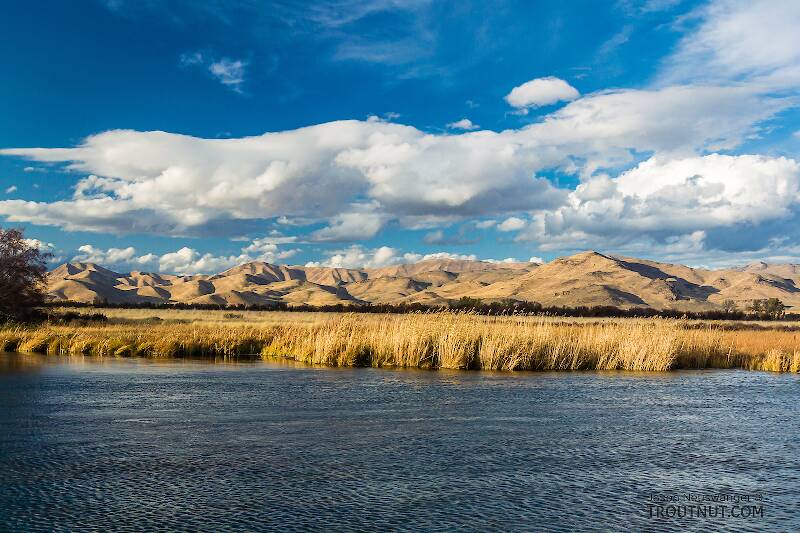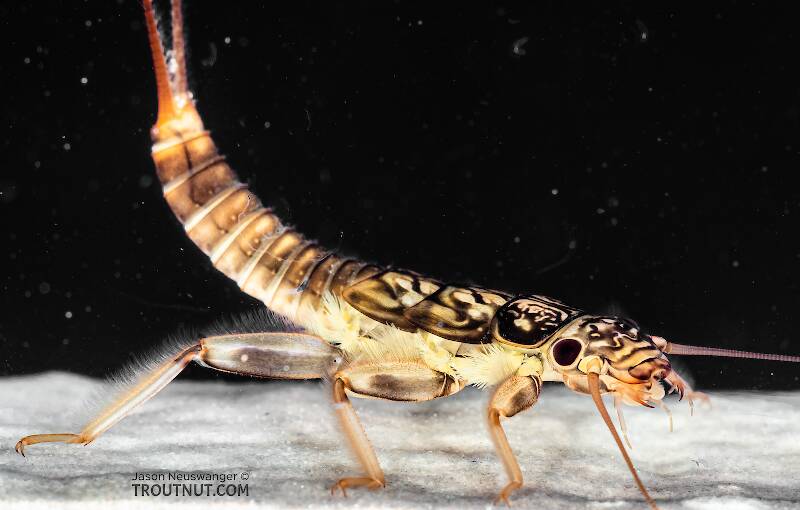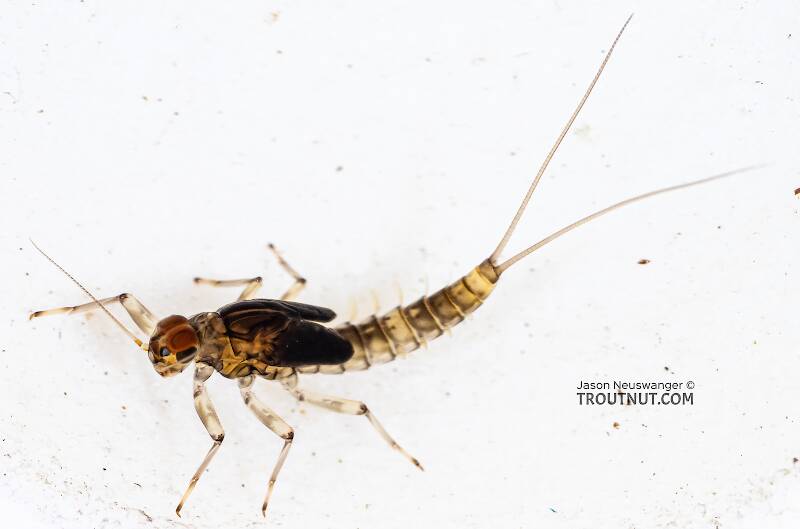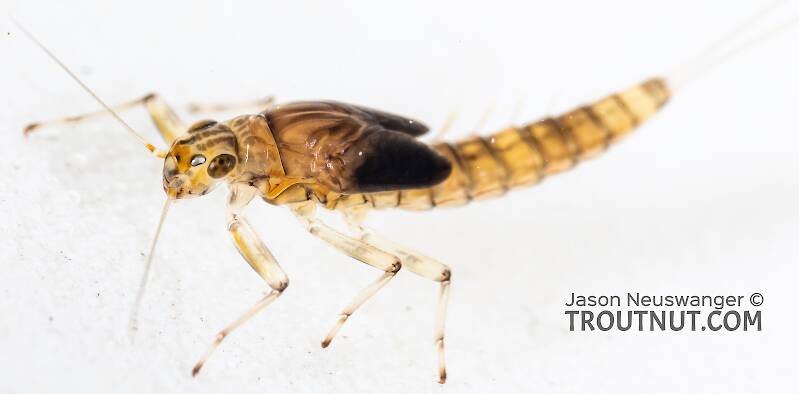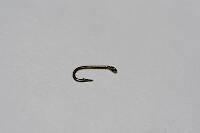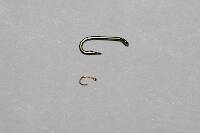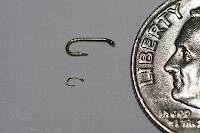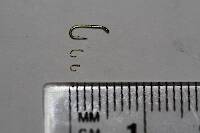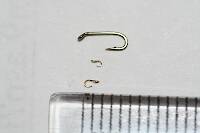
Blue-winged Olives
Baetis
Tiny Baetis mayflies are perhaps the most commonly encountered and imitated by anglers on all American trout streams due to their great abundance, widespread distribution, and trout-friendly emergence habits.
Featured on the forum

I was not fishing, but happened to be at an unrelated social event on a hill above this tiny creek (which I never even saw) when this stonefly flew by me. I assume it came from there. Some key characteristics are tricky to follow, but process of elimination ultimately led me to Sweltsa borealis. It is reassuringly similar to this specimen posted by Bob Newell years ago. It is also so strikingly similar to this nymph from the same river system that I'm comfortable identifying that nymph from this adult. I was especially pleased with the closeup photo of four mites parasitizing this one.

Troutnut is a project started in 2003 by salmonid ecologist Jason "Troutnut" Neuswanger to help anglers and
fly tyers unabashedly embrace the entomological side of the sport. Learn more about Troutnut or
support the project for an enhanced experience here.
By Troutnut on April 11th, 2021
I was out in the Issaquah Alps doing some puppy training yesterday and decided to bring my bug-collecting stuff along. Mostly it was an excuse to get more practice with my new microscope and test out a new system for holding bugs I've sorted to photograph.
Previously, I've had some sensitive specimens quickly die after being sorted into their own separate containers or compartments, either because the water warms up more quickly in the compartments or the oxygen runs out. This leads to specimens that aren't in ideal shape for photos. To solve the problem, I drilled holes in an ice cube tray and gorilla glued some little squares of 250-micron Nitex mesh (drift sampling net material) to the outside. Then I stick the whole thing in a tub of aerated water with a freezer block. This allows me to separate different types of bugs into lots of compartments, while still having them aerated and cooled from a common, larger reservoir of water.

It worked great. Some typically fragile Baetids and Heptageniids stayed in good shape for a very long time, more than long enough to take photos. I didn't photograph any of the Heptageniids, though, because they were Cinygmula and Rhithrogena nymphs for which there are no species keys available.
My favorite new addition was Claassenia sabulosa, a very pretty golden stonefly nymph.

There were also a lot of Hesperoperla pacifica nymphs in the sample, but I already have good photos of those.
Previously, I've had some sensitive specimens quickly die after being sorted into their own separate containers or compartments, either because the water warms up more quickly in the compartments or the oxygen runs out. This leads to specimens that aren't in ideal shape for photos. To solve the problem, I drilled holes in an ice cube tray and gorilla glued some little squares of 250-micron Nitex mesh (drift sampling net material) to the outside. Then I stick the whole thing in a tub of aerated water with a freezer block. This allows me to separate different types of bugs into lots of compartments, while still having them aerated and cooled from a common, larger reservoir of water.

It worked great. Some typically fragile Baetids and Heptageniids stayed in good shape for a very long time, more than long enough to take photos. I didn't photograph any of the Heptageniids, though, because they were Cinygmula and Rhithrogena nymphs for which there are no species keys available.
My favorite new addition was Claassenia sabulosa, a very pretty golden stonefly nymph.

There were also a lot of Hesperoperla pacifica nymphs in the sample, but I already have good photos of those.
Closeup insects by Troutnut from Holder Creek in Washington
Quick Reply
Related Discussions
Topic
Replies
Last Reply
3
Feb 12, 2009
by Creno
by Creno

